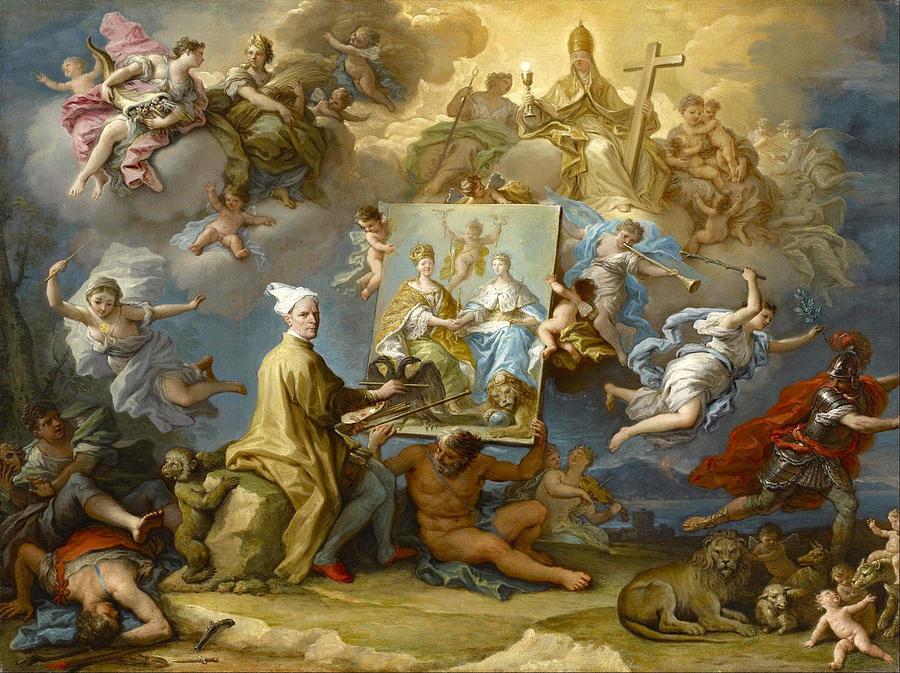
Peace of Utrecht (1713-14)

Figure 1.--This painting was titled an 'Allegory on the Conclusion of the War of Spanish Succession' meaning the Peace of Utrecht. The artist was Paolo de Matteis (1662–1728), Italian (Neapolitan) artist. We do notice the prominent polition of the pope in the painting. The peape ended the cinflict between two Catholic royal famiklies, the Hapsburgs abd Bourbons. Matteis is celebrating the transfer of the Bourbon controlled Kingdom of Naples to the Austrian Hapsburgs. At the left we see the population njoying the economic fruits of peace. At the center right we see an angel driving away a soldier meaning war. And we see a lion lating down with sheep, another metaphor for peace. The artist has place himself at the center of the work, rather unusual. He is finishing a painting personifications of Austria and Spain. Shortly after the War, Matteis worked for Naples' new Austrian rulers.
|
|
The Treaty of Utrecht ended the War of the Spanish Sucessioin (1701-14). Actually there were also the treaties of Rastatt and Baden. They end the great European war known as the War of the Spanish Succession. The war was the last of Frennch King Louis XIV's many wars. He launched because he sought to place a Bourbon on what had been the Spanish Hapsburg throne. The first peace treaty that ended the War was signed at Utrecht on (April 11, 1713). It was a major turning point in European history. It ended what had been a series of destructive religious and dynastic wars which had claimed millions of lives and massive destruction.
Utrecht was just the first. The Franco-Austrian treaties of Rastatt and Baden were also important (1714). Several important agreements were needed to craft the peace. Much of it swirled around the
widespread Hapburg possessions. The treaties recognized the Bourbon claimnt Philip V as the king of Spain and in turn Philip agreed to renounced any claims to the French throne andcrelenquish Spamish possessions: the Spanish Netherlands (Belgium) and Italian provinces (Milan, Naples, and Sardinia) were transferred to the Austrian crown. British possession of Gibraltar and Minorica were confirmed. Sicily was awarded to Savoy. France recognized the legitimacy of the Hanovarian dynasty on the British throne. The commercial provisions were favorable to the Netherlands and Britain. Utrecht not only ended the major religious conflicts, but it ushered the modern era of diplomatic conflict-management among the European powers.
CIH

Navigate the Children in History Website:
[Return to Main War of the Spanish Succession page]
[Return to Main peace treaty page]
[Return to Main specific conflict page]
[About Us]
[Introduction]
[Biographies]
[Chronology]
[Climatology]
[Clothing]
[Disease and Health]
[Economics]
[Freedom]
[Geography]
[History]
[Human Nature]
[Ideology]
[Law]
[Nationalism]
[Presidents]
[Religion]
[Royalty]
[Science]
[Social Class]
[Bibliographies]
[Contributions]
[FAQs]
[Glossaries]
[Images]
[Links]
[Registration]
[Tools]
[Children in History Home]
Created: 12:30 PM 8/8/2018
Last updated: 12:30 PM 8/8/2018
br>



